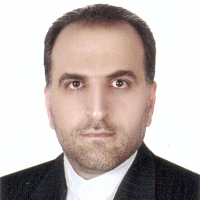Effects of bilateral microinjections of ibotenic acid into neostriatal region and forced exercise on spatial learning and memory and anthropometric characteristics of male rats
Striatum is the major input site of the basal ganglia. Lesion of striatum caused motor and cognitive impairments. Recent evidence has suggested that physical activity can improve cognitive and learning disorders caused by brain damage. The present study examined the effect of bilateral microinjections of ibotenic acid in neostriatum of the BG and forced treadmill exercise on anthropometric characteristics and learning and spatial memory of male rats.
48 male Wistar rats were randomly divided into six groups: Control, Sham-lesioned, Lesioned, Exercise, Exercise + Sham-lesioned and Exercise + lesioned. Lesion was made by bilateral microinjection of ibotenic acid into neostriatum. The exercise groups were subjected to a protocol of running on a treadmill for four weeks
Findings showed that ibotonic acid microinjection significantly decreased learning and spatial memory (P<0.05). Forced treadmill exercise could get better learning and spatial memory, but it could not significantly improve learning and spatial memory impairment induced by ibotenic acid injection in striatum. On the other hand, four weeks forced treadmill exercise enhanced anthropometric characteristics in lesion group (P = 0.03).
The present results suggest that striatum had a main role on learning and spatial memory, while four forced treadmill exercise could not improve spatial learning and memory impairment induced by ibotenic acid injection in striatum.
Anthropometry , Exercise , Basal Ganglia , Learning , Spatial Memory , Rats
-
Real and Perceived Motor Competence Are Further Developed Through the Integration of Modern Teaching Methods with Inclusive Education
Behzad Mohammadiorangi *, , Hadi Abbaszadeh Ghanati
Journal of Motor Control and Learning, Autumn 2024 -
Effect of Barreausol Exercises on Balance and Motor Coordination in Children Aged 10-12 Years
Maryam Khademi, *, Shahzad Tahmasebi Boroujeni, Amir Shams
Journal of Sports Psychology,



